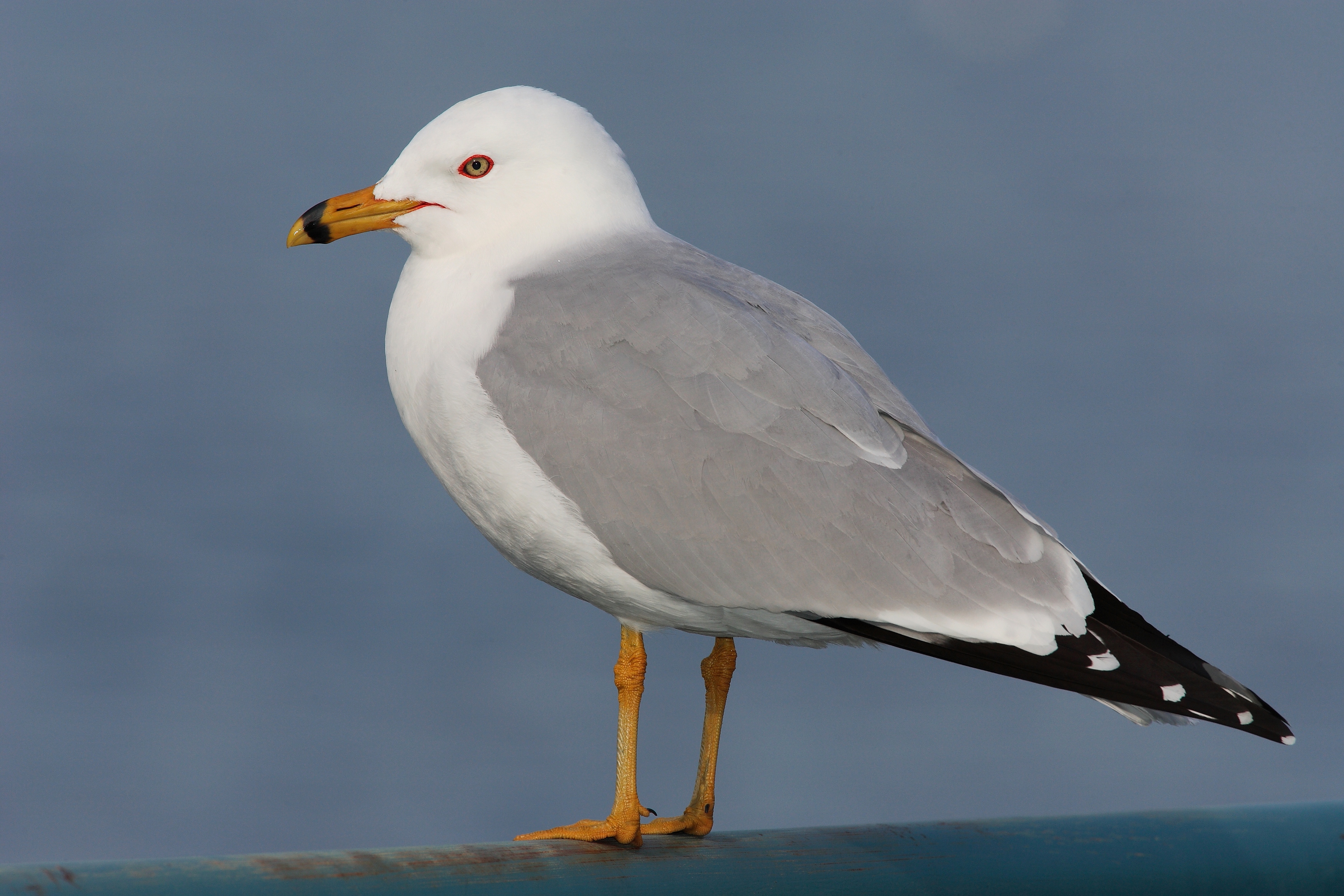- Ring-billed Gull
Taxobox
name = Ring-billed Gull
status = LC | status_system = IUCN3.1

image_width = 240px
regnum =Animal ia
phylum = Chordata
classis = Aves
ordo =Charadriiformes
familia =Laridae
genus = "Larus "
species = "L. delawarensis"
binomial = "Larus delawarensis"
binomial_authority = Ord,1815 ,Philadelphia The Ring-billed Gull ("Larus delawarensis") is a medium-sized
gull .Adults are 49 cm length and with a 124 cm wingspan. They have a white head, neck and underparts and a relatively short, yellow bill with a dark ring. The back and wings are silver grey and they have yellow legs. Their eyes are yellow and their outer rims are red. This bird takes three years to reach its breeding plumage; its appearance changes with each fall molt.
Their breeding habitat is near lakes, rivers or the coast in
Canada and the northernUnited States . They nest colonially on the ground, often on islands. This bird tends to be faithful to its nesting site, if not its mate, from year to year.They are migratory and most move south to the
Gulf of Mexico and the Atlantic andPacific coasts ofNorth America , also theGreat Lakes .This gull is a regular wanderer to western Europe, and in
Ireland andGreat Britain it is no longer classed as a rarity, with several birds regularly wintering in these countries.These birds forage in flight or pick up objects while swimming, walking or wading. They also steal food from other birds and frequently scavenge. They are omnivorous; their diet may include insects, fish, grain, eggs, earthworms and rodents. These birds are opportunistic and have adapted well to taking food discarded or even left unattended by people. It is regarded as a pest by many beach-goers because of its willingness to steal unguarded food on highly crowded beaches. The gull's natural enemies are
rat s, foxes, cats,raccoon s,coyote s,eagle s, anddog s.In the late 19th century, this bird was hunted for its plumage. Its population has since rebounded and it is probably the most common gull in North America. In some areas, it is displacing less aggressive birds such as the
Common Tern .References
* Database entry includes justification for why this species is of least concern
* "National Geographic" "Field Guide to the Birds of North" "America" ISBN 0-7922-6877-6
*" Seabirds, an Identification Guide" by Peter Harrison, (1983) ISBN 0-7470-1410-8
*"Handbook of the Birds of the World Vol 3", Josep del Hoyo editor, ISBN 84-87334-10-5
*National Audubon Society. "The Sibley Guide to Birds", by David Allen Sibley, ISBN 0-679-45122-6External links
* [http://www.birds.cornell.edu/programs/AllAboutBirds/BirdGuide/Ring-billed_Gull.html Ring-billed Gull] at All About Birds
* [http://www.bsc-eoc.org/avibase/avibase.jsp?pg=summary&lang=EN&id=E1B5FF0EB1F64C2F&ts=1137490701669 Ring-billed Gull] at Avibase
* [http://www.mbr-pwrc.usgs.gov/id/framlst/i0540id.html Ring-billed Gull] at USGS
* [http://www.sdakotabirds.com/species/ring_billed_gull_info.htm Ring-billed Gull] at South Dakota Birds and Birding
* [http://www.flickr.com/groups/birdguide/pool/tags/Larus%20delawarensis Field Guide Page on Flickr]
Wikimedia Foundation. 2010.
